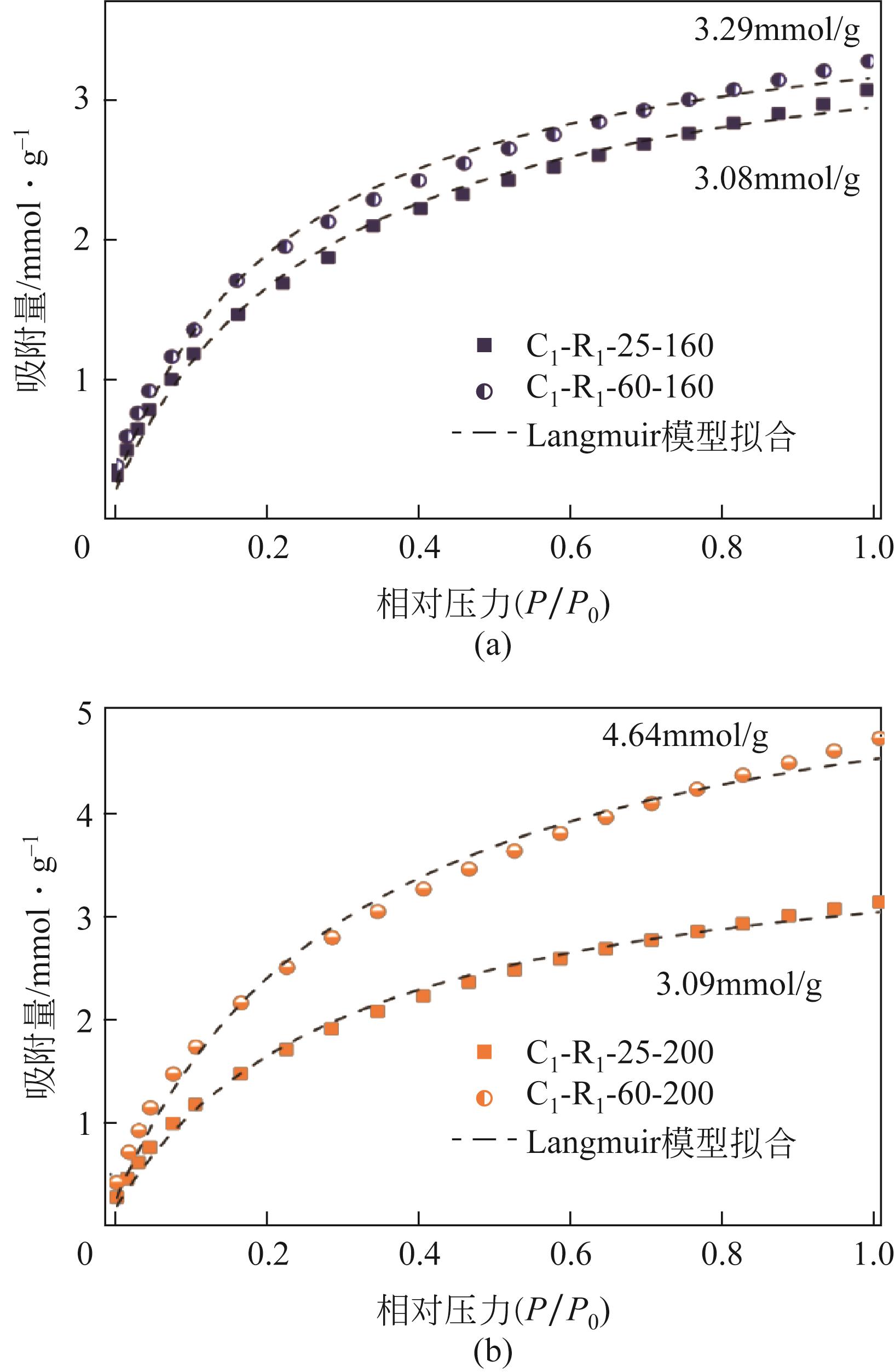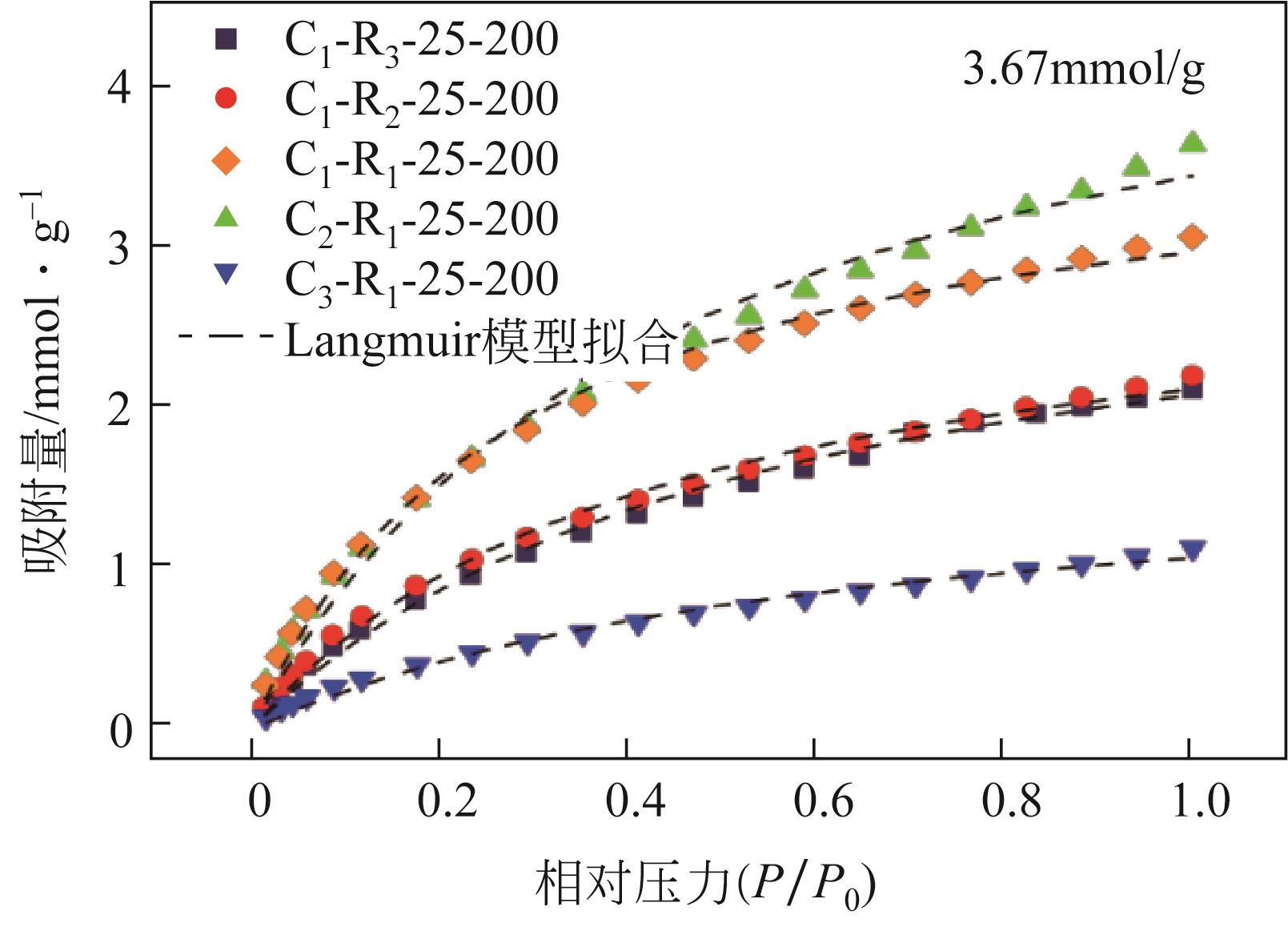| 1 |
HUANG Rui, YUAN Xiangzhou, YAN Lunjing, et al. Carbon precursors in coal tar: Extraction and preparation of carbon materials[J]. Science of the Total Environment, 2021, 788: 147697.
|
| 2 |
MA Zhihao, WEI Xianyong, LIU Guanghui, et al. Value-added utilization of high-temperature coal tar: A review[J]. Fuel, 2021, 292: 119954.
|
| 3 |
杨永斌, 董寅瑞, 钟强, 等.高温煤焦油沥青黏结剂碳化固结作用在炭质型材中的应用与研究进展[J].化工进展, 2022, 41(12): 6419-6429.
|
|
YANG Yongbin, DONG Yinrui, ZHONG Qiang, et al. Application and research progress of carbonization consolidation of high temperature coal tar pitch binder in formed carbon material[J]. Chemical Industry and Engineering Progress, 2022, 41(12): 6419-6429.
|
| 4 |
任洪凯, 邓文安, 李传, 等. 中/低温煤焦油酚类化合物的组成研究[J]. 煤炭转化, 2013, 36(2): 67-70.
|
|
REN Hongkai, DENG Wen’an, LI Chuan, et al. Study on the composition of phenolic compounds in middle/low temperature coal tar[J]. Coal Conversion, 2013, 36(2): 67-70.
|
| 5 |
NIU Zeshi, WANG Yugao, SHEN Jun, et al. Insight into aromatic structures of a middle-temperature coal tar pitch by direct characterization and ruthenium ion-catalyzed oxidation[J]. Fuel, 2019, 241: 1164-1171.
|
| 6 |
SUN Zhihui, ZHANG Weihong. Chemical composition and structure characterization of distillation residues of middle-temperature coal tar[J]. Chinese Journal of Chemical Engineering, 2017, 25(6): 815-820.
|
| 7 |
吴婷, 凌凤香, 马波, 等. GC-MS分析低温煤焦油酸性组分及碱性组分[J]. 石油化工高等学校学报, 2013, 26(3): 44-48, 52.
|
|
WU Ting, LING Fengxiang, MA Bo, et al. Analysis of acid composition and base composition from low-temperature coal tar by GC-MS[J]. Journal of Petrochemical Universities, 2013, 26(3): 44-48, 52.
|
| 8 |
毛学锋, 李军芳, 钟金龙, 等. 中低温煤焦油化学组成及结构的分子水平表征[J]. 煤炭学报, 2019, 44(3): 958-964.
|
|
MAO Xuefeng, LI Junfang, ZHONG Jinlong, et al. Composition and structure molecular characterizations of medium and low temperature coal tar[J]. Journal of China Coal Society, 2019, 44(3): 958-964.
|
| 9 |
李军芳, 毛学锋, 胡发亭. 中低温煤焦油酚油馏分中酚类化合物的组成[J]. 煤炭转化, 2019, 42(2): 32-38.
|
|
LI Junfang, MAO Xuefeng, HU Fating. Composition of phenolic compounds in phenol oil distillate of medium and low temperature coal tar[J]. Coal Conversion, 2019, 42(2): 32-38.
|
| 10 |
孙鸣, 刘永琦, 张丹, 等. 基于Py-GC/MS的中低温煤焦油催化裂解研究[J]. 中国矿业大学学报, 2019, 48(3): 647-654.
|
|
SUN Ming, LIU Yongqi, ZHANG Dan, et al. Catalytic cracking of low temperature coal tar by Py-GC/MS[J]. Journal of China University of Mining & Technology, 2019, 48(3): 647-654.
|
| 11 |
张生娟, 高亚男, 陈刚, 等. 煤焦油中酚类化合物的分离及其组成结构鉴定研究进展[J]. 化工进展, 2018, 37(7): 2588-2596.
|
|
ZHANG Shengjuan, GAO Yanan, CHEN Gang, et al. Progress of separation, composition and structure identification of phenolic compounds in coal tar[J]. Chemical Industry and Engineering Progress, 2018, 37(7): 2588-2596.
|
| 12 |
JI You’an, HOU Yucui, REN Shuhang, et al. Highly efficient extraction of phenolic compounds from oil mixtures by trimethylamine-based dicationic ionic liquids via forming deep eutectic solvents[J]. Fuel Processing Technology, 2018, 171: 183-191.
|
| 13 |
马明明, 苏小平, 闵小建, 等. 中低温煤焦油蒸馏过程中金属元素的迁移规律[J]. 化工进展, 2018, 37(9): 3355-3361.
|
|
MA Mingming, SU Xiaoping, MIN Xiaojian, et al. Migration law of metal elements during distillation of low temperature coal tar[J]. Chemical Industry and Engineering Progress, 2018, 37(9): 3355-3361.
|
| 14 |
郑金欣, 田育成, 郝博天, 等. 中低温煤焦油基炭微球的制备[J]. 化工进展, 2020, 39(2): 649-657.
|
|
ZHENG Jinxin, TIAN Yucheng, HAO Botian, et al. Preparation of medium and low temperature coal tar-based mesocarbon microbeads[J]. Chemical Industry and Engineering Progress, 2020, 39(2): 649-657.
|
| 15 |
张智琛, 温福山, 师楠, 等. 环烷基重油与低温煤焦油共碳化制备针状焦的结构相容性[J]. 石油学报(石油加工), 2022, 38(6): 1317-1324.
|
|
ZHANG Zhichen, WEN Fushan, SHI Nan, et al. Structural compatibility of needle coke prepared by co-carbonization of naphthenic-based heavy oil and low-temperature coal tar[J]. Acta Petrolei Sinica (Petroleum Processing Section), 2022, 38(6): 1317-1324.
|
| 16 |
Alberto CASTRO-MUÑIZ, Sara LORENZO-FIERRO, Amelia MARTÍNEZ-ALONSO, et al. Ordered mesoporous carbons obtained from low-value coal tar products for electrochemical energy storage and water remediation[J]. Fuel Processing Technology, 2019, 196: 106152.
|
| 17 |
YIN Jian, ZHANG Wenli, ALHEBSHI Nuha A, et al. Synthesis strategies of porous carbon for supercapacitor applications[J]. Small Methods, 2020, 4(3): 1900853.
|
| 18 |
HWANG Jongkook, EJSMONT Aleksander, FREUND Ralph, et al. Controlling the morphology of metal-organic frameworks and porous carbon materials: metal oxides as primary architecture-directing agents[J]. Chemical Society Reviews, 2020, 49(11): 3348-3422.
|
| 19 |
HE Xiaojun, MA Hao, WANG Jingxian, et al. Porous carbon nanosheets from coal tar for high-performance supercapacitors[J]. Journal of Power Sources, 2017, 357: 41-46.
|
| 20 |
ROBERTS Aled D, LI Xu, ZHANG Haifei. Porous carbon spheres and monoliths: Morphology control, pore size tuning and their applications as Li-ion battery anode materials[J]. Chemical Society Reviews, 2014, 43(13): 4341-4356.
|
| 21 |
DUTTA Saikat, BHAUMIK Asim, WU Kevin C W. Hierarchically porous carbon derived from polymers and biomass: Effect of interconnected pores on energy applications[J]. Energy & Environmental Science, 2014, 7(11): 3574-3592.
|
| 22 |
梁骥, 闻雷, 成会明, 等. 碳材料在电化学储能中的应用[J]. 电化学, 2015, 21(6): 505-517.
|
|
LIANG Ji, WEN Lei, CHENG Huiming, et al. Applications of carbon materials in electrochemical energy storage[J]. Journal of Electrochemistry, 2015, 21(6): 505-517.
|
| 23 |
LIU Jian, QIAO Shizhang, BUDI HARTONO Sandy, et al. Monodisperse yolk-shell nanoparticles with a hierarchical porous structure for delivery vehicles and nanoreactors[J]. Angewandte Chemie International Edition, 2010, 49(29): 4981-4985.
|
| 24 |
OUYANG Yi, SHI Huimin, FU Ruowen, et al. Highly monodisperse microporous polymeric and carbonaceous nanospheres with multifunctional properties[J]. Scientific Reports, 2013, 3(1): 1430.
|
| 25 |
SUN Xiaoming, LI Yadong. Colloidal carbon spheres and their core/shell structures with noble-metal nanoparticles[J]. Angewandte Chemie, 2004, 116(5): 607-611.
|
| 26 |
孙慧, 李石. 化学气相沉积法制备新型有序大孔碳球及其表征[J]. 化学与生物工程, 2018, 35(9): 22-24, 29.
|
|
SUN Hui, LI Shi. Preparation of novel ordered macroporous carbon spheres by chemical vapor deposition method and their characterization[J]. Chemistry & Bioengineering, 2018, 35(9): 22-24, 29.
|
| 27 |
LIU Jian, QIAO Shizhang, LIU Hao, et al. Extension of the Stöber method to the preparation of monodisperse resorcinol-formaldehyde resin polymer and carbon spheres[J]. Angewandte Chemie International Edition, 2011, 50(26): 5947-5951.
|
| 28 |
LIU Jian, YANG Tianyu, WANG Dawei, et al. A facile soft-template synthesis of mesoporous polymeric and carbonaceous nanospheres[J]. Nature Communications, 2013, 4(1): 2798.
|
| 29 |
林生军, 黄印, 谢东日, 等. 环氧树脂高温分子链松弛与玻璃化转变特性[J]. 物理学报, 2016, 65(7): 077701.
|
|
LIN Shengjun, HUANG Yin, XIE Dongri, et al. Molecular relaxation and glass transition properties of epoxy resin at high temperature[J]. Acta Physica Sinica, 2016, 65(7): 077701.
|
| 30 |
GOMEZ-SERRANO V, PASTOR-VILLEGAS J, PEREZ-FLORINDO A, et al. FT-IR study of rockrose and of char and activated carbon[J]. Journal of Analytical and Applied Pyrolysis, 1996, 36(1): 71-80.
|
| 31 |
SAIKIA Binoy K, BORUAH R K, GOGOI P K. FT-IR and XRD analysis of coal from Makum coalfield of Assam[J]. Journal of Earth System Science, 2007, 116(6): 575-579.
|
| 32 |
高峰, 李存梅, 王媛, 等. 树脂基球状活性炭的制备及对二氧化碳吸附性能的研究[J]. 燃料化学学报, 2014, 42(1): 116-120.
|
|
GAO Feng, LI Cunmei, WANG Yuan, et al. Preparation of resin-base spherical activated carbon and study on adsorption properties towards CO2 [J]. Journal of Fuel Chemistry and Technology, 2014, 42(1): 116-120.
|
| 33 |
TAKAGI H, MARUYAMA K, YOSHIZAWA N, et al. XRD analysis of carbon stacking structure in coal during heat treatment[J]. Fuel, 2004, 83(17/18): 2427-2433.
|
| 34 |
MINUS Marilyn L, CHAE Han Gi, KUMAR Satish. Single wall carbon nanotube templated oriented crystallization of poly(vinyl alcohol)[J]. Polymer, 2006, 47(11): 3705-3710.
|
| 35 |
郑超, 康凯, 周术元, 等. 水分子在多孔炭材料上的吸附行为研究进展[J]. 化工进展, 2021, 40(7): 3803-3812.
|
|
ZHENG Chao, KANG Kai, ZHOU Shuyuan, et al. Adsorption behavior of water molecules on porous carbon materials[J]. Chemical Industry and Engineering Progress, 2021, 40(7): 3803-3812.
|
| 36 |
XIAO Zhuqian, ZHANG Qiang, WANG Xiaolei, et al. Organic nitrogen promotes stability of metallic catalysts in conversion of bamboo pulp to low carbon polyols[J]. Journal of Fuel Chemistry and Technology, 2019, 47(6): 675-687.
|
| 37 |
BORGOHAIN Xavy, BORUAH Anakshi, SARMA Gautam Kumar, et al. Rapid and extremely high adsorption performance of porous MgO nanostructures for fluoride removal from water[J]. Journal of Molecular Liquids, 2020, 305: 112799.
|
| 38 |
SAHU Ramesh Chandra, PATEL Rajkishore, Bankim Chandra RAY. Adsorption of Zn(Ⅱ) on activated red mud: Neutralized by CO2 [J]. Desalination, 2011, 266(1/2/3): 93-97.
|
| 39 |
王红宁, 黄丽, 宋夫交, 等. 中空碳纳米球的制备及VOCs吸附性能[J]. 高等学校化学学报, 2021, 42(6): 1704-1715.
|
|
WANG Hongning, HUANG Li, SONG Fujiao, et al. Synthesis and VOCs adsorption properties of hollow carbon nanospheres[J]. Chemical Journal of Chinese Universities, 2021, 42(6): 1704-1715.
|
| 40 |
裴亮军, 李冬, 袁扬, 等. 不同正构烷烃溶剂沉淀中低温煤焦油沥青质的结构组成变化规律[J]. 化工进展, 2017, 36(6): 2101-2108.
|
|
PEI Liangjun, LI Dong, YUAN Yang, et al. Composition and structural changes of low temperature coal tar asphaltenes precipitated in different n-alkane solvents[J]. Chemical Industry and Engineering Progress, 2017, 36(6): 2101-2108.
|
| 41 |
王存国. 温度对酚醛树脂聚合与裂解的影响[J]. 分子科学学报, 2019, 35(5): 353-359.
|
|
WANG Cunguo. Effect of temperature on polymerization and pyrolysis of phenolic resin[J]. Journal of Molecular Science, 2019, 35(5): 353-359.
|
 ), 侯豪杰2,3, 黄瑞2,3, 崔煜1, 王兵2,3(
), 侯豪杰2,3, 黄瑞2,3, 崔煜1, 王兵2,3( ), 刘健4, 鲍卫仁2,3, 常丽萍2,3, 王建成2,3, 韩丽娜1(
), 刘健4, 鲍卫仁2,3, 常丽萍2,3, 王建成2,3, 韩丽娜1( )
)
 ), HOU Haojie2,3, HUANG Rui2,3, CUI Yu1, WANG Bing2,3(
), HOU Haojie2,3, HUANG Rui2,3, CUI Yu1, WANG Bing2,3( ), LIU Jian4, BAO Weiren2,3, CHANG Liping2,3, WANG Jiancheng2,3, HAN Lina1(
), LIU Jian4, BAO Weiren2,3, CHANG Liping2,3, WANG Jiancheng2,3, HAN Lina1( )
)






